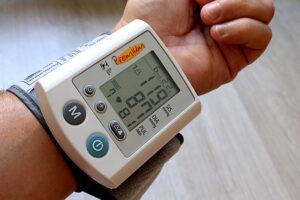 During the last 60 years, fiber optic technology has been applied to improve the efficiency of developed systems in various spheres like medicine, vehicles, and other industries. Modern fiber optic solutions expand the abilities by implementing levels of data and sensing technology in the energy, medical field, and even aerospace. There are various fiber optic solutions that help researchers improve their development and make new discoveries in science.
During the last 60 years, fiber optic technology has been applied to improve the efficiency of developed systems in various spheres like medicine, vehicles, and other industries. Modern fiber optic solutions expand the abilities by implementing levels of data and sensing technology in the energy, medical field, and even aerospace. There are various fiber optic solutions that help researchers improve their development and make new discoveries in science.
Intrinsic and extrinsic fiber optic sensors are two wide categories of fiber optic sensors. Extrinsic fiber optic sensors utilize the fiber to manage the light to a sensing region. Then the optical signal is modulated in another environment. Talking about the intrinsic fiber optic sensors, the light remains within the waveguide. So it measures the influence of the optical fiber signal.
Intrinsic fiber optic sensor technology, where the fiber optic sensor is the fiber optic cable itself, has improved significantly during recent years. There are two main technologies connected to intrinsic fiber optic sensors: scattering and FBG. FBG methods can be fully distributed or have many sensing points. With the help of FBG sensors, scientists can define the changes by getting precise measurements. Scattering techniques depend on natural imperfections occurring in the fiber optic cable. The FBGs have a high signal-to-noise ratio in comparison with scattering techniques.
Both scattering and FBGs use different demodulation techniques. Scattering techniques get the information by observing changes in naturally back-scattering patterns. For FBG based technology, wavelength division multiplexing is the most prevalent demodulation technique. However, in certain circumstances, optical frequency domain reflectometry can become the most useful method.
Wavelength division multiplexing is able to spread to large distances and get the data rapidly. This technology can also support multiple fiber Bragg gratings on a fiber. It observes critical points more than the whole field of the data. That is why it is mostly applied in automobile crash testing as a monitoring instrument.
The scattering techniques can cover long distances and give a distributed profile of the data. They obtain information all over the entire fiber optic cable. Many systems on the market measure temperature or acoustics and are called Distributed Temperature Sensing (DTS) or Distributed Acoustic Sensing (DAS). These techniques are usually applied in monitoring a pipeline for tampering, for example, where there is no need for high-speed acquisition.
Optical frequency domain reflectometry is another demodulation technique that is mostly applied with FBG sensors where fiber Bragg gratings are placed really close and create a fully distributed sensing fiber. It has many advantages like the combination of high spatial resolution, a bunch of fiber optic sensors, a quick refresh rate, and a full distribution set. Apart from distributed sensing of a strain and temperature, this technology allows defining 2D deflection, liquid level, magnetic fields, etc.
Nowadays, thanks to fiber optic technology, scientists have an opportunity to solve any problems in their designs by using fiber optic systems. And there are still many possibilities for fiber optic technology in the future.
Optromix is a fast-growing vendor of fiber Bragg grating (FBG) product line such as fiber Bragg grating sensors, for example, fbg strain sensors, FBG interrogators and multiplexers, Distributed Acoustic Sensing (DAS) systems, Distributed Temperature Sensing (DTS) systems. The company creates and supplies a broad variety of fiber optic solutions for monitoring worldwide. If you are interested in structural health monitoring systems and want to learn more, please contact us at info@optromix.com


 A group of scientists from China has designed a very sensitive tiny
A group of scientists from China has designed a very sensitive tiny  Nowadays researchers tend to use fusion as a safe energy source at power plants. Nevertheless, this process is dangerous. It requires reliable
Nowadays researchers tend to use fusion as a safe energy source at power plants. Nevertheless, this process is dangerous. It requires reliable Passive
Passive  Common communication channels apply fibers in
Common communication channels apply fibers in  Nowadays
Nowadays A novel
A novel  A team of scientists from Israel and Russia has developed a novel, straightforward, and low-cost
A team of scientists from Israel and Russia has developed a novel, straightforward, and low-cost  A team of scientists from Denmark in a collaboration with chemical engineers has presented novel accurate
A team of scientists from Denmark in a collaboration with chemical engineers has presented novel accurate  Fluorescent
Fluorescent